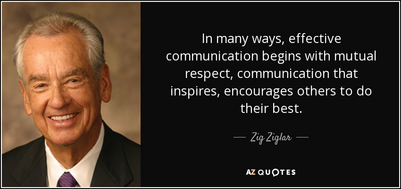
Do the Most Important Conversations Face to Face
Rabbi Moffic writes, “E-mail is a great gift. It allows us to connect with people all over the world. Yet, it can also create distance between people who sit right next to one another.
Virtual interaction loses the gestures, body movement, and inexplicable sense we get when we encounter someone in person. When we truly need to connect—to know the other in an intimate powerful way—we need to encounter them face-to-face.
When Moses confronts Pharaoh, he does so in person. When Moses and God speak, they often, according to the text, talk panim el panim, face to face. The connection becomes deeper and more consequential. Each party leaves the interaction transformed.”
What is a face-to-face conversation?
A face-to-face conversation is a powerful tool for connecting with others. It involves the exchange of ideas, opinions and facts in an open dialogue while engaging in direct visual contact between two or more individuals. By maintaining eye contact throughout the discussion, people can better understand each other’s perspectives to find common ground and reach meaningful conclusions on any given topic.
For this reason, face-to-face conversations have been seen as fundamental communication tools since ancient times that still remain valid today when faced with complex issues demanding understanding beyond words written on paper alone.

Why does face-to-face interaction matter?
As a leader, understanding the power of face-to-face dialogue is essential to building relationships with your team. Through developing trust and engagement, you can create an environment where people feel valued and their input matters. With 93% of communication being nonverbal, learning these subtle cues to interpret feelings behind conversations allows for stronger connections between parties - meaning that both sides must make effort to effectively communicate messages which are easy to understand. Face-to-face interaction has many advantages when seeking success within teams; through engaging, this important tool leaders can ensure meaningful conversations occur every day.
When it comes to sharing information, we're often focused on how articulate and effective our message is. Yet, as communicators, there's a whole other side that lies beyond our control: the listener. A person’s interpretation of your words can be heavily influenced by their emotional state at any given moment; no two people will ever receive the same thing from an exchange. Additional roadblocks like language barriers or personal biases may further distort what they ultimately hear – all these factors require mindful consideration if you want true understanding between parties to occur!
The benefits of Face-to-Face Communication
- Fostering meaningful business relationships starts with something as simple yet powerful as a face-to-face conversation. These conversations can not only show you care, but they are also the most effective way to address sensitive topics.
Relationships between business associates are strengthened through meaningful, face-to-face conversations. This was demonstrated in a survey of 760 executives conducted by Forbes - overwhelmingly expressing that communication is most effectively conveyed when meeting someone in person. With 84% reporting an appreciation for this dynamic interaction style and 85% noting it as the ideal way to discuss sensitive topics, having a direct dialogue proves invaluable.
- By tapping into the power of non-verbal and verbal communication, we can effectively create an environment in which people are inspired to take action.
Through face-to-face interactions, nuanced facial expressions lend an additional layer of context to the conversation that makes it more effective than other forms of communication.
- With increased engagement, improved concentration, and intensifying bonds, the possibilities are endless!
With their full attention assured, your ideas are sure to resonate with the audience.
- Surprisingly, utilizing your resources more efficiently can have an enormous impact on productivity levels.
Investing in face-to-face interactions with clients and candidates, even during trying economic times, pays dividends. According to Forbes' survey results, meeting someone in person is an astute choice for persuasion (91%), leadership (87%), and engagement (86%). Such encounters demonstrate the value both parties place on one another; creating a strong foundation of trust which can be further developed over time.
- By leveraging its quick and precise clarity and conflict resolution capabilities, this resource can aid in achieving meaningful solutions quickly.
Miscommunication can be a costly mistake, especially when discussing important matters. Doing so over the phone or by email adds another layer of complexity to conversations due to non-verbal cues being lost in translation. Face-to-face meetings decrease this risk and provide an environment where ideas are exchanged more efficiently without any misinterpretations getting in the way.
- Discovering nonverbal communication can provide insight into feelings and intentions, allowing for a deeper understanding of those around us.
Communication is a powerful tool, and according to research conducted by scientists, the vast majority of people rely heavily on body language or verbal cues when conveying their message. This makes understanding how we express ourselves without words an essential part of communication - one that can help us form more meaningful connections with those around us.
- This open environment encourages constructive dialogue and the synthesis of insightful conclusions.
Face-to-Face messaging is a great way for businesses to communicate quickly, easily, and efficiently - enabling productive conversations that save valuable time. It provides employees with the convenient ability to reach out as well as instantly receive responses from multiple colleagues simultaneously.
- Intimate conversations are the key to building trust and establishing confidential relationships. One-on-one communication is essential for maintaining transparency between parties, creating a secure foundation of understanding that can weather any storm.
When the stakes are high and discretion is of utmost importance, this solution offers a secure way to handle sensitive matters.
Some of the cons
- It is hard to find a good time for everyone.
- Large meetings can be challenging to orchestrate
- There is a possibility for poorer retention by the listener
- No real accountability and there is little or no record for future reference

Tips for improving face-to-face skills and communication
- Calling for full focus is essential when having a face-to-face discussion, whether it's in person or virtually. Make sure to set the tone right from the start and create an environment of complete attention!
Make sure to carve out time in the workweek for team members to really connect, both digitally and physically. During video conferences, get all participants involved by having them turn on their cameras and unmute their microphones; this will create a more engaging atmosphere. For that meeting face-to-face, ask everyone to sit close together or form circles - physical presence is an important part of fostering meaningful communication!
- Refining your capacity for articulation can lead to better communication and more impactful presentations of ideas. Developing this skill requires patience, as well as a willingness to explore diverse ways of expressing yourself.
When our thoughts remain within the confines of our minds, they can exist free from judgment or scrutiny. But when we choose to express them verbally in a group setting - such as at a meeting - it's often difficult for us to transmit those ideas clearly and confidently, leading more often than not, unfortunately, towards disappointment and confusion on behalf of all involved.
- Anticipating the conversation can be empowering; jot down key responses to any relevant queries you predict will arise. This way, you'll have a better chance of effectively contributing to the dialogue and leaving an impression!
- Broaden your knowledge and exercise those reading muscles by immersing yourself in a different literary world - one that you may not normally explore. Step away from fiction (if this is what you're used to) and give biographies or books on psychology a try. On the other hand, if business financials are more familiar ground for you, consider switching it up with some self-help literature instead!
For an improved level of comfort in conversations, try exploring a few strategies such as practicing your speech while looking into the mirror. Recording chats can help you observe yourself and also provide feedback on areas that need improvement. Consider finding mentors who are available to listen attentively to practice with or join Toastmasters for greater exposure and guidance towards becoming a better communicator!
- It's important to be aware of how you communicate with your body language as much as it is to use words. Being mindful and making small adjustments in posture, facial expressions, eye contact, etc., can help create an effective connection during conversations.
We often underestimate the power of body language in our interactions, but it can strongly influence how other people perceive us. When engaging with someone else, your tone and mannerisms make an impact – from creating a sense of trust to fostering understanding or giving offense. All these silent communication tools play their part in producing meaningful conversations far beyond mere words alone.
- Expand your communication skills by engaging in active listening. Practicing this technique can improve relationships, empower others and enhance understanding of any situation.
Effective listening requires more than just hearing - it calls for taking on a conscious attitude of attention and consideration to really understand the speaker. Active listening is key, as you must focus exclusively on what's being said instead of formulating your response like during an argument or dialogue. To help hone this skill set, keep those eyes locked on the person sharing their thoughts; let go of any judgemental tendencies; and make sure all other distractions are forgotten while they speak!
Though there are some cons to having conversations face-to-face, the pros definitely outweigh them. Face-to-face interaction allows for building trust, developing deeper relationships, and opening up pathways of nonverbal communication that can often lead to more successful outcomes than if we communicate digitally. If you want to improve your skills in face-to-face conversation, remember to call for full attention, refine your articulation and anticipate the conversation. By following these tips, you'll be on your way to becoming a master communicator!
And if you need help refining your skills or just want someone to chat with, please give me a call. I love talking with people and getting to know them better - it's one of my favorite things about being human!

 |
Chuck Groot is an author, speaker, and teacher. His love of God has spanned over 6 decades and he finds the more he studies the Bible, the less he knows, the more he succeeds the more dependant on God he becomes, and that there is nothing outside of loving God our Father, and being loved in return.
I would really like your opinions and thoughts, please share them in the comments section below. Also, if you liked the article please share it |
Bibliography
Ashton College. (2013, November 21). Face-to-Face Advantages. Retrieved from Ashton College: https://www.ashtoncollege.ca/the-importance-of-face-to-face-communication/
Black, J. (2019, June 18). HOW TO PRACTICE ACTIVE LISTENING. Retrieved from Today Duke University: https://today.duke.edu/2019/06/how-practice-active-listening
Caldwell, D. (2018, December 28). 7 Pros and Cons of Face to Face Communication in the Workplace. Retrieved from Small Biz Club: https://smallbizclub.com/leadership/communication/7-pros-cons-face-face-communication-workplace/
Grossman, D. (2022, July 25). Face-to-Face Communication: 6 Benefits of Leading in Person. Retrieved from Your Thought Partner: https://www.yourthoughtpartner.com/blog/bid/44390/leading-in-person-6-reasons-to-communicate-face-to-face
IESE Business School. (2022, February 22). The power of face-to-face conversations. Retrieved from IESE Education: https://www.iese.edu/standout/face-to-face-conversations-power/
Indeed. (2022, May 21). What Are the Benefits of Face-to-Face Communication? Retrieved from Indeed: https://ca.indeed.com/career-advice/career-development/face-to-face-communication
Lee, D. G. (2020, December 28). How to Articulate Thoughts into Words - If You’re Introverted or Don’t Know How to Speak Eloquently. Retrieved from Brainz: https://www.brainzmagazine.com/post/how-to-articulate-thoughts-into-words-if-you-re-introverted-or-don-t-know-how-to-speak-eloquently
Lifesize. (2019, October 29). The Importance of Face-to-Face Communication in the Modern Workforce. Retrieved from Lifesize: https://www.lifesize.com/blog/importance-face-to-face-communication/
Martins, J. (2022, May 21). Listening to understand. Retrieved from Asana: https://asana.com/resources/active-listening
Moffic, R. E. (2019, Octover 18). 20 Things you can learn about Leadership From Moses. Retrieved from YFC: https://www.yfc.net/images/uploads/general/20-tips-from-moses.pdf
Olsen, I. M. (2021, March 10). How to Articulate Your Thoughts Into Words. Retrieved from Convey Clearly: https://conveyclearly.com/2021/03/10/how-to-articulate-your-thoughts-into-words/
Ramsdale, L. (2023, January 8). What is face-to-face conversation? Advantages and disadvantages. Retrieved from The Business Communication: https://thebusinesscommunication.com/what-is-face-to-face-conversation/
Sandeep Patil, M. P. (2013, October 8). Advantages and Disadvantages of Face to Face Communication. Retrieved from Articles Junction: http://articles-junction.blogspot.com/2013/08/advantages-and-disadvantages-of-face-to.html
Skills you need. (2022, November 27). Barriers to Effective Communication. Retrieved from Skillsyouneed: https://www.skillsyouneed.com/ips/barriers-communication.html
The advantages and disadvantages of face-to-face communication. (2018, June 13). Retrieved from Star Outico: https://www.staroutico.com/latest-news/the-advantages-and-disadvantages-of-face-to-face-communication/
Value Prop. (2021, June 25). 5 Benefits of Face-to-Face Communication. Retrieved from Value Prop: https://www.valueprop.com/blog/5-benefits-face-face-communication
Waikusa, M. (2022, November 8). ADVANTAGES AND DISADVANTAGES OF FACE-TO-FACE COMMUNICATION. Retrieved from Geography Point: https://geographypoint.com/2022/11/advantages-and-disadvantages-of-face-to-face-communication/
What Are the Benefits of Face-to-Face Communication? (2022, May 21). Retrieved from Indeed: https://ca.indeed.com/career-advice/career-development/face-to-face-communication
Wooll, M. (2022, January 11). Why face-to-face communication matters (even with remote work). Retrieved from betterup: https://www.betterup.com/blog/face-to-face-communication#:~:text=Face%2Dto%2Dface%20communication%20is%20often%20more%20effective%20than%20written,us%20understand%20each%20other%20better.

